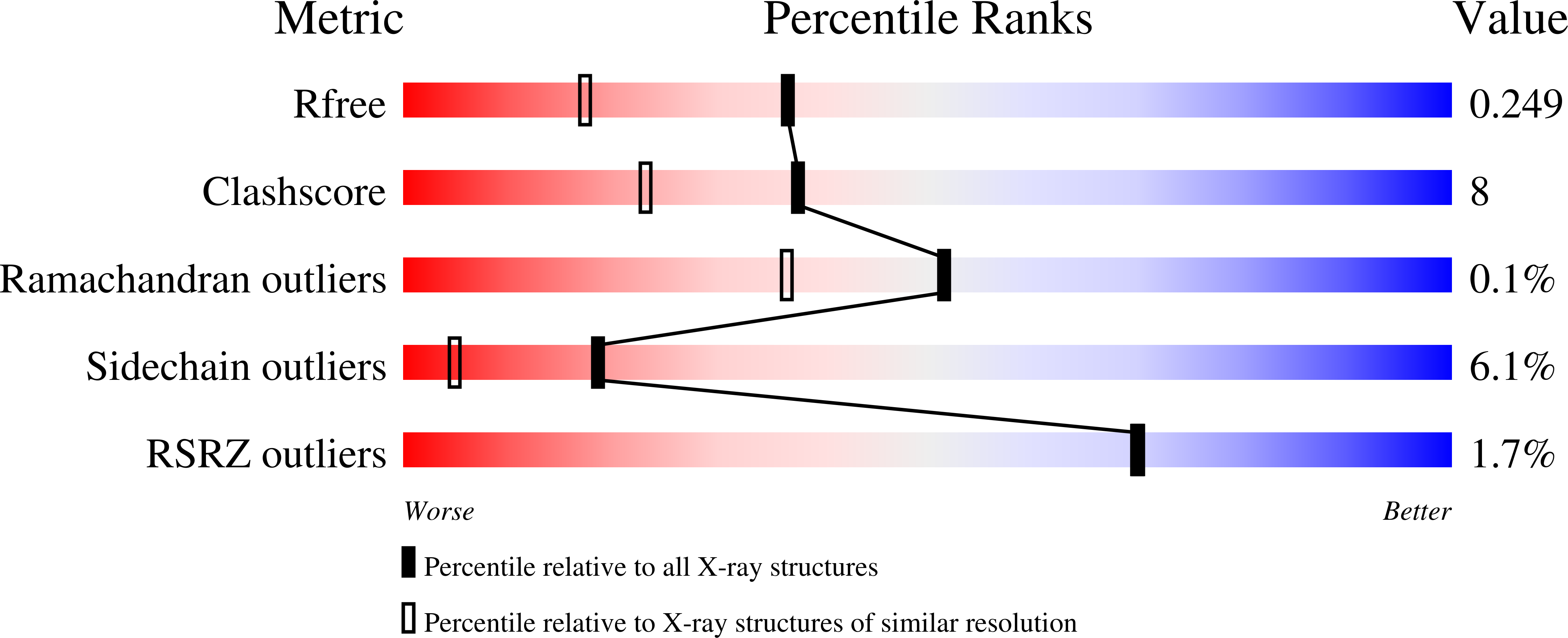Crystal structures and enzymatic properties of three formyltransferases from archaea: environmental adaptation and evolutionary relationship.
Mamat, B., Roth, A., Grimm, C., Ermler, U., Tziatzios, C., Schubert, D., Thauer, R.K., Shima, S.(2002) Protein Sci 11: 2168-2178
- PubMed: 12192072
- DOI: https://doi.org/10.1110/ps.0211002
- Primary Citation of Related Structures:
1M5H, 1M5S - PubMed Abstract:
Formyltransferase catalyzes the reversible formation of formylmethanofuran from N(5)-formyltetrahydromethanopterin and methanofuran, a reaction involved in the C1 metabolism of methanogenic and sulfate-reducing archaea. The crystal structure of the homotetrameric enzyme from Methanopyrus kandleri (growth temperature optimum 98 degrees C) has recently been solved at 1.65 A resolution. We report here the crystal structures of the formyltransferase from Methanosarcina barkeri (growth temperature optimum 37 degrees C) and from Archaeoglobus fulgidus (growth temperature optimum 83 degrees C) at 1.9 A and 2.0 A resolution, respectively. Comparison of the structures of the three enzymes revealed very similar folds. The most striking difference found was the negative surface charge, which was -32 for the M. kandleri enzyme, only -8 for the M. barkeri enzyme, and -11 for the A. fulgidus enzyme. The hydrophobic surface fraction was 50% for the M. kandleri enzyme, 56% for the M. barkeri enzyme, and 57% for the A. fulgidus enzyme. These differences most likely reflect the adaptation of the enzyme to different cytoplasmic concentrations of potassium cyclic 2,3-diphosphoglycerate, which are very high in M. kandleri (>1 M) and relatively low in M. barkeri and A. fulgidus. Formyltransferase is in a monomer/dimer/tetramer equilibrium that is dependent on the salt concentration. Only the dimers and tetramers are active, and only the tetramers are thermostable. The enzyme from M. kandleri is a tetramer, which is active and thermostable only at high concentrations of potassium phosphate (>1 M) or potassium cyclic 2,3-diphosphoglycerate. Conversely, the enzyme from M. barkeri and A. fulgidus already showed these properties, activity and stability, at much lower concentrations of these strong salting-out salts.
Organizational Affiliation:
Max-Planck-Institut für Biophysik, D-60528 Frankfurt am Main, Germany Institut für Biophysik der Johann Wolfgang Goethe-Universität, D-60590 Frankfurt am Main, Germany.














